How Freddie Mercury built a successful career. Explore key moments that defined the journey.
Freddie Mercury was a British singer and songwriter, globally recognized as the lead vocalist and pianist of the rock band Queen. Celebrated as one of rock's greatest singers, he possessed a four-octave vocal range and a flamboyant stage presence. Mercury's theatrical style defied rock frontman conventions, significantly influencing Queen's artistic direction and solidifying his status as an iconic performer.
1969: Graduation from Ealing Art College
In 1969, Freddie Mercury graduated from Ealing Art College with a diploma in graphic art and design.
1969: Joined Ibex
In 1969, Freddie Mercury joined Liverpool-based band Ibex, later renamed Wreckage.
April 1970: Joined Smile
In April 1970, Freddie Mercury teamed up with Brian May and Roger Taylor to become lead singer of their band Smile.
1970: Formation of Queen
In 1970, Freddie Mercury formed the band Queen with guitarist Brian May and drummer Roger Taylor.
1970: Joined Sour Milk Sea
In early 1970, Freddie Mercury joined Oxford-based band Sour Milk Sea, which soon broke up.
1971: John Deacon Joined Queen
In 1971, John Deacon joined Freddie Mercury, Brian May, and Roger Taylor in the band Queen.
1972: First solo effort as Larry Lurex
In 1972, Freddie Mercury made his first solo effort under the pseudonym Larry Lurex while Queen was recording their debut album. Robin Geoffrey Cable enlisted Mercury to perform lead vocals on the songs "I Can Hear Music" and "Goin' Back".
1973: Release of Larry Lurex Single
In 1973, the songs "I Can Hear Music" and "Goin' Back", performed by Freddie Mercury under the pseudonym Larry Lurex, were released together as a single.
1975: Everett plays "Bohemian Rhapsody"
In 1975, Freddie Mercury visited Kenny Everett, bringing with him an advance copy of the single "Bohemian Rhapsody" which Everett played repeatedly on his radio show despite it not being officially accepted by Capital Radio.
1980: Frequent use of synthesisers
From 1980, Freddie Mercury started using synthesisers frequently in the studio to produce music for Queen.
1981: Recordings with Michael Jackson
Between 1981 and 1983, Freddie Mercury recorded several tracks with Michael Jackson, including a demo of "State of Shock", "Victory", and "There Must Be More to Life Than This".
1981: Performance in Morumbi Stadium
In 1981, Queen broke worldwide records for concert attendance in the Morumbi Stadium in São Paulo, becoming the first band to play in South American stadiums.
1982: Collaboration with Morgan Fisher
From 1982, Freddie Mercury collaborated with Morgan Fisher, who performed with Queen in concert during the Hot Space leg.
1982: Collaboration with Billy Squier on Emotions in Motion
In 1982, Freddie Mercury and Roger Taylor sang on the title track for Billy Squier's studio release, Emotions in Motion.
1982: Queen releases the album Hot Space including "Life Is Real (Song for Lennon)"
In 1982, Queen released the album Hot Space, which included the song "Life Is Real (Song for Lennon)" dedicated to John Lennon by Freddie Mercury.
1983: Recordings with Michael Jackson
Between 1981 and 1983, Freddie Mercury recorded several tracks with Michael Jackson, including a demo of "State of Shock", "Victory", and "There Must Be More to Life Than This".
1984: Stage Footwear
From 1984 onward, Freddie Mercury's principal stage footwear was a pair of black striped Adidas high-top shoes, which later sold for £127,000.
1984: "Love Kills" Debuts in UK Chart
In 1984, Freddie Mercury contributed to the soundtrack for the restoration of the 1927 film Metropolis. The song "Love Kills", written by Giorgio Moroder in collaboration with Mercury, debuted at number 10 in the UK Singles Chart.
1985: Collaboration with Mike Moran
From 1985 onward, Freddie Mercury collaborated with Mike Moran in the studio and Spike Edney in concert.
1985: Live Aid Performance
In 1985, Freddie Mercury performed with Queen at Live Aid, a performance considered by many as one of the greatest live performances in rock history.
1985: Queen's Performance at Live Aid
In 1985, Freddie Mercury performed with Queen at the Live Aid concert.
1985: Release of Mr. Bad Guy
In 1985, Freddie Mercury's album "Mr. Bad Guy" was released and debuted in the top ten of the UK Album Charts.
August 1986: Final Live Performance with Queen
On August 9, 1986, Freddie Mercury gave his final live performance with Queen at Knebworth Park in England.
1986: Magic Tour
In 1986, Diana Moseley designed a crown and cloak for Freddie Mercury to wear during the Magic tour (his final concerts). The crown and cloak later sold for £635,000.
1986: Collaboration with Billy Squier on Enough Is Enough
In 1986, Freddie Mercury and Roger Taylor contributed to two tracks on Billy Squier's release, Enough Is Enough, providing vocals on "Love is the Hero" and musical arrangements on "Lady With a Tenor Sax".
1986: Final Tour with Queen
In 1986, Freddie Mercury embarked on his final tour with Queen. Photographer Denis O'Regan captured a definitive pose of Mercury on stage during this tour.
1986: Wembley Stadium Performance
In 1986, Freddie Mercury performed his iconic "call and response" routine at Wembley Stadium, which was later featured in the 2012 Summer Olympics closing ceremony.
1986: Recording songs for Time musical
In 1986, Freddie Mercury recorded two songs for Dave Clark's West End sci-fi musical Time, including the title song.
1986: Interview on Musical Diversity
In a 1986 interview, Freddie Mercury explained his dislike for repeating the same musical styles and his incorporation of current trends in music, film, and theatre into his songwriting.
1987: Release of "The Great Pretender"
In 1987, Freddie Mercury released his version of "The Great Pretender" by The Platters, which debuted at No. 5 in the UK.
1988: Release of Barcelona album
In 1988, Freddie Mercury released his second album, "Barcelona", recorded with Spanish soprano vocalist Montserrat Caballé, combining elements of popular music and opera.
1990: Mercury's final stage appearance at the Brit Awards
On February 18, 1990, Freddie Mercury made his final appearance on stage at the Brit Awards held at the Dominion Theatre in London, where Queen received the Brit Award for Outstanding Contribution to British Music.
May 1991: Filming of "These Are the Days of Our Lives" music video
In May 1991, Freddie Mercury, visibly thin, filmed his final scenes for the music video "These Are the Days of Our Lives", with the topic of AIDS never discussed openly during filming.
June 1991: Mercury retires from work with Queen
In June 1991, after finishing his work with Queen, Freddie Mercury retired to his home in Kensington, West London.
1991: Final Recordings for 'Made in Heaven'
In 1991, Freddie Mercury made his final recordings that would later be featured on Queen's posthumous album, 'Made in Heaven', released in November 1995.
1991: Increased sales of Queen albums
In 1991, the year of Freddie Mercury's death, there was an increase in sales of Queen albums. What some cynical people refer to as the 'dead star' factor contributed to this rise in popularity.
April 1992: Founding of The Mercury Phoenix Trust
In April 1992, following Freddie Mercury's death from AIDS-related complications, the remaining members of Queen founded The Mercury Phoenix Trust and organized The Freddie Mercury Tribute Concert for AIDS Awareness, to celebrate Mercury's life and raise money for AIDS research.
1992: Queen album sales increase in the United States
In 1992, the year following Freddie Mercury's death, sales of Queen albums increased dramatically in the United States, boosted by the movie Wayne's World which featured "Bohemian Rhapsody".
2004: Queen's album sales reach 34.5 million in the US
By 2004, Queen had sold 34.5 million albums in the United States, with about half of those sales occurring since Freddie Mercury's death in 1991.
2005: Review of Live Aid Performance
In 2005, a critic reviewed Live Aid and stated that Freddie Mercury's performance was the most godlike of all frontmen.
October 2012: Freddie Mercury in "Best Possible Taste: The Kenny Everett Story"
In October 2012, Freddie Mercury appeared as a supporting character in the BBC television drama "Best Possible Taste: The Kenny Everett Story", portrayed by actor James Floyd.
November 2016: Freddie Mercury in "The Freddie Mercury Story: Who Wants to Live Forever"
In November 2016, Freddie Mercury was played by actor John Blunt in "The Freddie Mercury Story: Who Wants to Live Forever", broadcast in the UK on Channel 5. The program received mixed reviews.
2016: Research on Mercury's Voice
In 2016, a research team led by Professor Christian Herbst undertook a study to understand the appeal behind Freddie Mercury's voice, identifying his faster vibrato and use of subharmonics.
October 2018: Mercury portrayed in "Urban Myths" and "Will & Grace"
In October 2018, David Avery portrayed Mercury in the "Urban Myths" comedy series, focusing on Live Aid antics. Also in October 2018, Eric McCormack (as Will Truman) portrayed Mercury on "Will & Grace" in the episode "Tex and the City."
2018: Bohemian Rhapsody biopic faces criticism
In 2018, the biopic 'Bohemian Rhapsody' faced criticism for its portrayal of Freddie Mercury's sexuality, being described as "sterilized" and "confused", and accused of being "dangerous".
Mentioned in this timeline
Adidas AG is a German multinational corporation the largest sportswear...
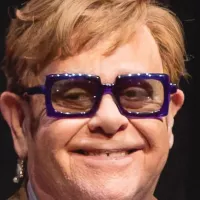
Sir Elton John is a highly successful British singer songwriter...
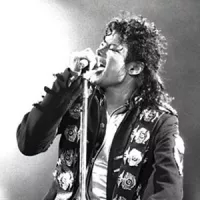
Michael Joseph Jackson the King of Pop was a highly...

Google LLC is a multinational technology company specializing in online...

John Lennon was a highly influential English singer-songwriter musician and...
India officially the Republic of India is a South Asian...
Trending
31 minutes ago Spencer Knight expected to start; faces challenges, showcases skill with beautiful save.

32 minutes ago Jesse Plemons discusses 'Bugonia,' 'Hunger Games' prequel, and working with Cruise and Iñárritu.
32 minutes ago Cameron Crowe's 'The Uncool': A Cool Backstage Pass to Music History & Cringe
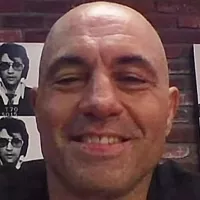
32 minutes ago Joe Rogan Describes Trump as 'Odd' After Receiving a Random Call From Him.
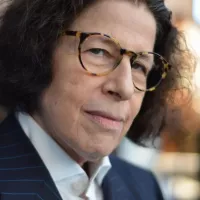
32 minutes ago Fran Lebowitz Discusses Politics, NYC Holidays, and Disdain for Hiking.
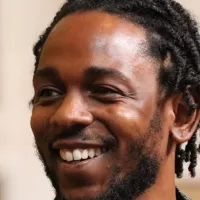
33 minutes ago Spotify Wrapped 2025 Reveals Top Artists, Including Kendrick Lamar; Paul George Misses Game.
Popular
Aftyn Alyssa Behn is an American politician currently serving as...
Matt and Ross Duffer known as the Duffer Brothers are...
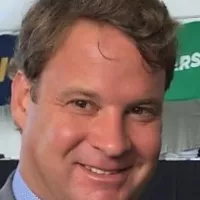
Lane Kiffin is an American football coach currently serving as...

XXXTentacion born Jahseh Dwayne Ricardo Onfroy was a controversial yet...

William Franklin Graham III commonly known as Franklin Graham is...
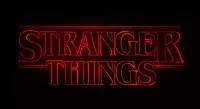
Stranger Things created by the Duffer Brothers is a popular...
